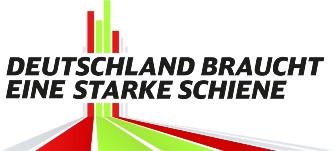
DB Management Board member Ronald Pofalla: Record sum for an efficient modern rail network, attractive stations and the Digital Rail Germany
(Berlin, 5 March 2021) DB is continuing to make its rail infrastructure fit with record investments and a new work programme. “We are building a new network for Germany and laying the foundation for the Deutschlandtakt,” says DB Infrastructure CEO Ronald Pofalla. “Rail is a centrepiece of the climate change. That is why we are investing more than ever before and increasing the pace of refurbishment and more capacity in the rail network,” Pofalla continued. Around 12.7 billion euros from DB, the federal government and the federal states will flow into the rail infrastructure this year (12.2 billion euros in 2020). This is the highest sum ever earmarked in one year for modernisation, maintenance, new construction and expansion of the rail network and more attractive stations. In 2021, DB is tackling over 1,900 kilometres of track, more than 2,000 points, almost 140 bridges and around 670 stations across Germany.
The “New Network for Germany” work programme is based on four pillars. By hiring employees, increasing the use of digital construction and planning tools, predictive maintenance and the digitalisation of the railways, the network is clearly picking up speed.

In order to be able to implement all projects, DB will continue to expand its teams in 2021: 2,000 engineers and construction supervisors and 1,700 maintenance staff will join the ranks. Around 20 percent more employees are planned for the construction management of modern stations alone.
In the future, DB wants to realise important major projects up to 25 per cent faster and more efficiently. Digital tools, such as Building Information Modelling (BIM), as well as the practised early public participation and the Planning Acceleration Act are important catalysts for this.
Deutsche Bahn is also equipping its racetracks, such as the Hanover-Würzburg high-speed line, with around 1,300 smart sensors on the points. With this predictive maintenance, points and tracks are repaired at an early stage before a fault occurs. Last year, DB already avoided almost 5,000 switch malfunctions with smart technology.
Digital Rail Germany will take further steps in 2021, including equipping the first sections of the Rhine-Alpine freight corridor with the European control system ETCS and installing digital interlocking technology in Donauwörth, Bavaria. In October, the first highly automated vehicles will be running on a digitalised section of the S-Bahn in Hamburg.

Further optimised planning and additional construction infrastructure such as replacement bridges and alternative tracks should mean that in 2021 construction sites will be far less noticeable to customers. Disruptions on the network are already at their lowest level since records began. The most important reason: predictive maintenance, with which faults can be detected and remedied at an early stage.
Ronald Pofalla: “‘New Network for Germany’ – that stands for an attractive railway in the area, for more goods on the rails and the Deutschlandtakt. We are making the climate-friendly railway a high-performance mode of transport, building up considerable resources for it, planning faster and more effectively and being able to build more sustainably.”
Overview of important construction projects this year (selection):
– Infrastructure expansion on the lines
◦ Nuremberg-Erfurt,
Berlin-Dresden and
◦ Braunschweig-Wolfsburg (Weddeler Schleife) and
◦ Cologne junction
– Rehabilitation of the high-speed line Hanover-Würzburg in the section Kassel-Göttingen
– Renewal work on
◦ the Hamburg-Berlin line and
◦ between Frankfurt am Main and Mannheim (Riedbahn).
– Commissioning of the electrified Ulm-Friedrichshafen line.
The large and small stations also grow: In the main stations of Frankfurt am Main, Stuttgart, Hanover or Munich, DB is carrying out the largest conversion work in the company’s history for travellers and visitors. Small and medium-sized stations are getting more comfort and a more attractive appearance.
